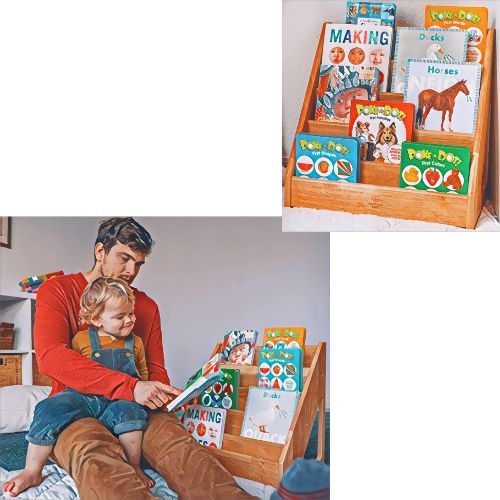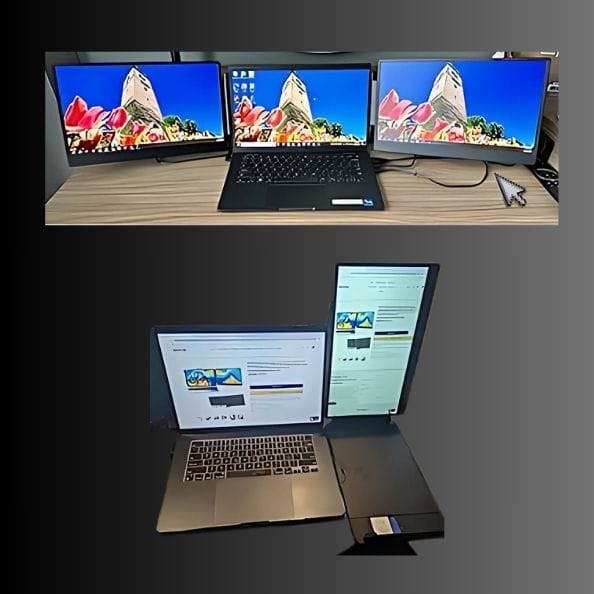Inspire imaginative play and creative thinking at home and in school
It’s no secret that children are natural-born learners and they thrive when their creativity and curiosity are nurtured.
But for parents, teachers, or schools wanting to encourage creativity in their young students, it can seem like a daunting challenge ...
One excellent way to foster this important skillset is with a Montessori bookshelf—a unique system of shelving designed specifically to turn your child into an independent learner who understands the concepts of order, organization, and responsibility.
From primary school age through high school years, this special storage solution can help kids find confidence and joy in learning new ideas while enhancing critical thinking skills at the same time.
Keep reading to learn more about how you can unleash your child's limitless potential with a Montessori Shelf!
What is a Montessori Bookshelf?
A Montessori bookshelf is a low-profile, open-faced bookcase specifically designed to foster self-guided learning and discovery in young children.

Montessori bookshelves are specialized bookcases designed to support the Montessori method of education, which emphasizes child-centered learning, independence, and hands-on exploration. This is based on the educational principles and approaches established by Dr. Maria Montessori.
These bookshelves play a vital role in creating an engaging and accessible learning environment for young children.
Constructed primarily from natural materials like wood, the Montessori bookshelf is scaled to be easily accessible to young children, enabling them to effortlessly view and reach books and other educational resources stored on the shelves.
The bookshelf may feature separate sections or compartments, each containing a diverse assortment of age-appropriate books, puzzles, games, or additional learning materials that contribute to the child's growth.
Purpose: The primary purpose of Montessori bookshelves is to promote self-directed learning and exploration among young children. They encourage children to choose books and materials that interest them, allowing them to explore and discover new concepts and ideas independently.
The open-shelving design also enables children to quickly locate and access materials, nurturing a sense of orderliness and organization within the learning space.
Why It's a Great Find
Are you looking for a way to make learning exciting and engaging for your child? Do you want to stimulate their creativity, curiosity, and problem-solving abilities in a fun and interactive way?

The Montessori bookshelf sparks young minds with hands-on exploration of material culture. Read on to find out what makes this educational tool so beneficial for parents teachers or schools!
Features:
- Low-profile and open-faced design, making it easily accessible for young children
- Constructed from natural materials like wood
- Divided into separate sections or compartments for organizing age-appropriate learning materials
- Designed to be a key component of a Montessori-style learning environment
Advantages:
- Encourages independence and self-guided learning
- Fosters a sense of orderliness and organization within the learning space
- Facilitates easy access to books and educational resources
- Promotes hands-on exploration and discovery
Benefits:
- Supports holistic development in young children
- Nurtures curiosity and a love for learning
- Provides an engaging and accessible learning environment
- Helps children develop problem-solving skills and critical thinking abilities
Frequently Asked Questions
Moving on, here are answers to some commonly asked questions ...

Q: What is a Montessori bookshelf?
A: A Montessori bookshelf is a low-profile, open-faced bookcase designed to foster self-guided learning and discovery in young children based on the Montessori educational principles.
Q: How does a Montessori bookshelf differ from a traditional bookshelf?
A: A Montessori bookshelf is designed to be easily accessible to young children, with low shelves and open compartments that make it simple for them to see and reach books and other learning materials.
Q: What materials are used to make Montessori bookshelves?
A: Montessori bookshelves are typically made from natural materials, such as wood.
Q: How do Montessori bookshelves support child-centered learning?
A: Montessori bookshelves encourage children to choose books and materials that interest them, allowing them to explore and discover new concepts and ideas independently.
Q: Can I use a Montessori bookshelf in my home?
A: Yes, Montessori bookshelves can be used in both home and school settings to create an engaging and accessible learning environment for young children.
Q: How do I organize materials on a Montessori bookshelf?
A: Organize materials by dividing the bookshelf into separate sections or compartments, each containing age-appropriate books, puzzles, games, or other educational resources.
Q: Are Montessori bookshelves suitable for all ages?
A: Montessori bookshelves are designed primarily for young children, but they can be adapted for older children and even adults by adjusting the height and organization of the shelves.
Q: How do Montessori bookshelves promote hands-on exploration?
A: The open-faced design of Montessori bookshelves makes it easy for children to access and interact with books and other learning materials, encouraging hands-on exploration and discovery.
Q: Can Montessori bookshelves help develop problem-solving skills and critical thinking abilities?
A: Yes, by encouraging self-guided learning and exploration, Montessori bookshelves help children develop problem-solving skills and critical thinking abilities.
Q: How can I incorporate a Montessori bookshelf into my existing learning environment?
A: Integrate a Montessori bookshelf into your existing learning environment by placing it in an accessible location and organizing age-appropriate materials on the shelves.
Fun Facts
The Montessori Concept has touched so many lives. Here are some fun facts to know ...
- The Montessori method was developed by Dr. Maria Montessori, an Italian physician and educator, in the early 1900s.
- Montessori education is practiced in over 20,000 schools worldwide.
- Famous Montessori alumni include Larry Page and Sergey Brin (co-founders of Google), Jeff Bezos (founder of Amazon), and Julia Child (celebrated chef and author).
- Dr. Montessori was the first woman to graduate from the University of Rome Medical School.
- Montessori materials are designed to be self-correcting, allowing children to learn from their mistakes.
- In a Montessori classroom, children of different ages often learn together, promoting social development and collaboration.
- Montessori education focuses on the development of the whole child, including cognitive, emotional, social, and physical growth.
- Dr. Montessori believed that children learn best in a prepared environment, with carefully chosen materials and activities.
- Montessori classrooms typically have mixed-age groupings, with children aged 3-6, 6-9, and 9-12 learning together.
- The Montessori method emphasizes the importance of hands-on learning, as Dr. Montessori believed that children learn best through active exploration and manipulation of their environment.
The Takeaway
Summing up, Montessori bookshelves are the perfect way to spark exploration and discovery in your child.
Not only do they encourage imaginative play and creative thinking, but they also come in a wide range of styles to suit any home or classroom interior.
Your Next Move
Did I mention that it’s lots of fun as well? Think of the look on your little one’s face when they open up the door to discover all their favorite stories or activities laid out in front of them!
So go ahead – give it a try and let your child explore, learn, and grow in ways you never thought possible.
Happy book shelving!
Disclaimer.
When you purchase through links on our site, we may earn an affiliate commission. We sometimes use affiliate links to products and services on retailer sites for which we can receive compensation if you click on those links or make purchases through them.








